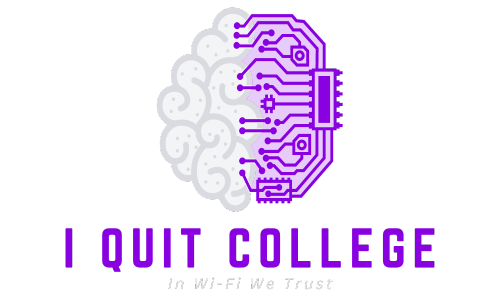Welcome to the world of digital marketing, where the possibilities for growing your business are endless. In today’s competitive online landscape, it’s crucial to have a strong presence and a targeted approach to reach your audience effectively. Digital marketing encompasses a range of strategies, from online advertising and social media marketing to search engine optimization (SEO), pay-per-click (PPC), content marketing, email marketing, and web analytics. By leveraging these strategies, you can take your business to new heights and connect with your target customers in meaningful ways.
Why should you invest in digital marketing? The answer is simple – it’s where your customers are. With billions of people active on various online platforms, digital marketing provides an unparalleled opportunity to engage with your target audience and drive conversions. Whether you’re a small startup or an established enterprise, implementing effective digital marketing strategies can help you gain a competitive edge and achieve your business goals.
Key Takeaways:
- Digital marketing encompasses a range of strategies, including online advertising, social media marketing, SEO, PPC, content marketing, email marketing, and web analytics.
- Digital marketing allows you to connect with your target audience and drive conversions in the ever-growing online landscape.
- Implementing effective digital marketing strategies can give your business a competitive edge and help you achieve your goals.
- Stay tuned to discover actionable insights on elevating your digital marketing efforts.
Factor in Seasonality for Effective Digital Marketing Campaigns
Every business experiences some level of seasonality, and it’s essential to factor this into your digital marketing strategy. Understanding the impact of seasonality can help you optimize your digital marketing campaigns, drive sales, and achieve better results.
By analyzing trends and aligning your bids with peak seasons or specific sales periods, you can effectively target your audience and capitalize on their buying behavior. Whether your business experiences a yearly sale, holiday uptick, or fluctuations based on changing seasons, taking seasonality into account is key to success.
Here are some practical ways to factor in seasonality to enhance your digital marketing campaigns:
- Identify popular times of the year or days of the week for your business. This analysis can help you allocate more resources during high-demand periods and make informed decisions about campaign optimization.
- Take a more aggressive approach for businesses that are highly seasonal. These industries, such as retail, travel, or hospitality, experience significant fluctuations in customer demand. Adjusting bids at the optimal time can help you maximize the impact of your digital marketing efforts and drive sales.
- Monitor industry trends and competition to identify opportunities and stay ahead of the curve. By understanding the market dynamics and the factors that influence your industry’s seasonality, you can fine-tune your campaigns to target the right audience at the right time.
By adapting your digital marketing strategy to seasonality, you can optimize your bids, align your messaging, and drive sales. Remember, seasonality is unique to each business, so it’s crucial to analyze your historical data and identify patterns that can guide your decision-making.
Next, we’ll explore how to optimize your digital marketing strategy with data-driven insights to further enhance your campaign performance.
Optimize Your Digital Marketing Strategy with Data-driven Insights
Maximizing the effectiveness of your digital marketing campaigns requires data-driven insights. By analyzing key metrics and leveraging valuable data, you can optimize your strategy to drive better results. Here are some essential tactics to consider:
Daypart Analysis
Conducting a daypart analysis allows you to identify the most profitable hours of the day for conversions. By understanding when your target audience is most active and likely to engage with your ads, you can adjust your bidding strategy accordingly. This enables you to allocate your budget effectively and maximize the impact of your campaign during peak periods.
Device Breakdown Analysis
It’s crucial to analyze the device breakdown data to gain insights into your customers’ preferences. By determining whether your audience is more inclined to make purchases on mobile or desktop devices, you can optimize your bids accordingly. This personalized approach ensures that your ads are presented in the most relevant and engaging way, increasing the chances of conversions.
Location Targeting
Targeting customers in specific locations can significantly enhance the effectiveness of your digital marketing efforts. Whether through zip codes or city names, location targeting enables you to tailor your message to a specific audience. By delivering targeted ads to users in locations relevant to your business, you can achieve higher engagement rates and drive more conversions.
Offline Sales Integration
Integrating offline sales data into your digital marketing strategy provides a comprehensive view of your campaign’s effectiveness. By tracking the impact of your online efforts on in-store purchases or phone inquiries, you can better understand the true ROI of your campaigns. This data-driven approach allows you to make informed decisions and allocate your budget more effectively.
Multiple Attribution Models
Utilizing multiple attribution models provides a holistic view of your marketing efforts. Rather than relying on a single model to evaluate the performance of your campaigns, diversifying your approach allows for more accurate analysis. By comparing different attribution models, you can gain deeper insights into which channels and touchpoints contribute most significantly to conversions, enabling you to optimize your budget allocation.
By optimizing your digital marketing strategy with data-driven insights, you can unlock the full potential of your campaigns and drive better results. Incorporating daypart analysis, device breakdown analysis, location targeting, offline sales integration, and multiple attribution models helps you make informed decisions and tailor your marketing efforts for maximum impact.
Image: Data-driven insights are crucial for optimizing your digital marketing strategy.
Expand Your Digital Advertising Reach and Effectiveness
To elevate your digital marketing efforts and maximize your impact, it’s crucial to expand your advertising reach and effectiveness. By branching out beyond a single platform and exploring cross-channel advertising opportunities, you can tap into new audiences and drive greater results. Two platforms that are worth considering for expanding your reach are Amazon and Google Shopping.
Amazon, a leading e-commerce platform, offers a vast audience of online shoppers. Advertising on Amazon allows you to reach customers who are actively searching for products, making it an excellent choice for businesses looking to boost their sales and visibility. In addition to Amazon, Google Shopping is another powerful platform that enables businesses to showcase their products to a wide range of customers. With Google Shopping ads, your products can appear alongside relevant search results, capturing the attention of potential buyers.
Expanding your advertising reach through cross-channel campaigns can provide valuable insights and data that can help you optimize your strategies. It allows you to compare and contrast the performance of different platforms, audience segments, and ad formats, enabling you to make informed decisions about your marketing investments.
“Cross-channel advertising allows businesses to leverage the strengths of various platforms and channels, reaching a wider audience and increasing the effectiveness of their campaigns.”
However, it’s important to note that while automation can streamline your advertising processes, it may limit your control over ad spend and targeting. Automated campaigns can be efficient for managing large volumes of data, but they might not provide the level of customization and targeting precision that some businesses require. In such cases, standard campaigns give you more control over your account and allow you to tailor your strategies to meet your specific objectives.
Another advantage of expanding your advertising reach is the opportunity to uncover hidden pricing problems. By advertising on different platforms, you can compare the performance and pricing of your products, identifying any discrepancies that may require attention.
Benefits of Expanding Your Digital Advertising Reach:
- Tap into new audiences and increase brand visibility.
- Compare and contrast platform performance for data-driven insights.
- Uncover hidden pricing problems across different platforms.
- Utilize automation for streamlined processes and efficiency.
- Customize and optimize campaigns with standard campaigns.
Expanding your digital advertising reach not only enables you to connect with a wider audience but also opens up opportunities for growth and success. By leveraging cross-channel advertising, exploring new platforms like Amazon and Google Shopping, and utilizing the right automation and campaign types, you can enhance the effectiveness of your digital marketing efforts and achieve your goals.
Conclusion
Digital marketing is a powerful tool that can elevate your business, boost your online presence, and drive growth. By implementing the right strategies, you can set yourself apart from the competition and achieve success in the digital landscape.
Optimizing your bids and analyzing data allow you to make informed decisions and maximize the effectiveness of your campaigns. Expanding your advertising reach across multiple platforms can help you reach a wider audience and uncover hidden pricing problems. Tailoring your campaigns to the seasonality of your business ensures that you are capitalizing on peak sales periods.
Remember, digital marketing is an ongoing process. To achieve long-term success, it’s important to continuously refine your strategies and adapt to market changes. By staying proactive and keeping up with the latest trends and technologies, you can unlock your business’s full potential and drive significant growth.
Start implementing these strategies today and watch your online presence soar. With the right digital marketing approach, your business can achieve the success it deserves.
FAQ
What is digital marketing?
Digital marketing encompasses various online strategies, such as online advertising, social media marketing, search engine optimization (SEO), pay-per-click (PPC), content marketing, email marketing, and web analytics, to promote products or services and drive business growth.
How can seasonality impact digital marketing campaigns?
Seasonality refers to fluctuations in consumer demand or behavior based on the time of year. By factoring in seasonality, businesses can analyze trends, adjust bids during peak seasons or sales periods, and optimize their digital marketing efforts to better align with consumer preferences and capitalize on opportunities for increased sales.
How can daypart analysis and device breakdown data improve digital marketing strategies?
Daypart analysis involves analyzing data to identify the most profitable hours of the day for conversions. Adjusting bids during these hours can help maximize the impact of digital marketing efforts. Similarly, analyzing device breakdown data helps businesses understand if their customers are more likely to make purchases on mobile or desktop devices. This insight allows for bid optimization based on device preference, enhancing campaign effectiveness.
How can location targeting and offline sales integration benefit digital marketing efforts?
Location targeting allows businesses to focus their marketing efforts on specific areas using zip codes or city names. By targeting customers in relevant locations, businesses can tailor their messages and increase the chances of engagement and conversions. Integrating offline sales data into digital marketing analytics provides a holistic view of marketing efforts and helps businesses understand the overall impact of their strategies beyond online interactions.
Should I consider branching out to different advertising platforms?
Yes, branching out to different advertising platforms can expand your advertising reach and effectiveness. For example, advertising on both Amazon and Google Shopping can diversify your online presence and potentially reach new audiences. Cross-channel insights can also provide valuable data and uncover hidden pricing problems that may go unnoticed when relying solely on a single platform.
What are profit-driven strategies in digital marketing?
Profit-driven strategies in digital marketing involve optimizing campaigns based on profitability instead of focusing solely on metrics such as clicks or conversions. By measuring the profitability of different keywords, products, or customer segments, businesses can allocate resources effectively and prioritize the most lucrative opportunities for growth.






